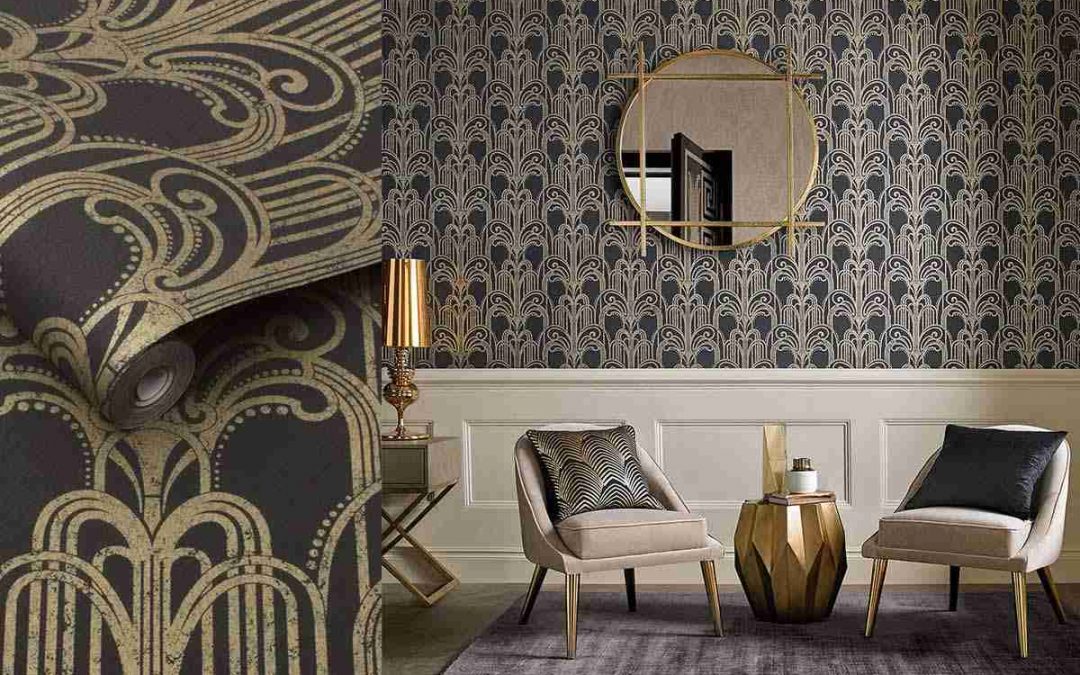The Art Deco period was very popular in America and Europe in the 1920s and 1930s, a stark contrast to the more minimalist, nature-inspired Art Nouveau that preceded it. Like Art Nouveau, Art Deco affected all areas of the decorative arts and was considered very glamorous, elegant, functional, and modern. It quickly became a popular style of interior decorating as well as making its influence felt in architecture, fashion, and even car design.
In interior decor, much like in architecture, the Art Deco style was all about making a big statement. Bold geometric patterns with hard angles and a clear preference for symmetry in design all symbolized the wave of an industry that was transforming the country. At the same time, the generous use of gold, steel and a variety of expensive materials spoke to the wealth that so many new industries were creating.
Art Deco survived through the roar of the 20s, the Depression of the 30s and even the global conflict that engulfed the 40s before finally falling out of favor in the 50s, giving way, at least in interior decor, to Mid-Century Modern style. Despite this, Art Deco is now experiencing a resurgence. Period pieces and reproductions in this iconic style are becoming highly sought after. And while you may not want your whole home looking like it was decorated by The Great Gatsby, if you’d like to add a bit of old school flair to your living space, here’s everything you need to live it up Art Deco-style.
Characteristics of Art Deco Interior Design
Geometric and angular forms, exotic materials, and linear decoration characterize Art Deco design. The look is strong and bold with no fussiness or romance anywhere in sight.
Materials
Certain materials pop up again and again in art deco interior design: stainless steel, mirrors, chrome, glass, lacquer, inlaid wood, and even exotic skins like shark and zebra.
Expensive materials such as ebony, marble, and rare woods were also often used, making some Art Deco pieces accessible only to the wealthy.
Common Themes
There are several themes that occur regularly in Art Deco design. They include:
- Leaves, branches, and feathers
- Nudes
- Trapezoids
- Stylized animals
- Chevrons and zigzags
- Sunbursts
- Jagged, pointed edges inspired by skyscrapers (such as the Chrysler building)
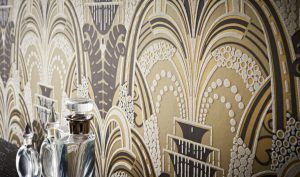
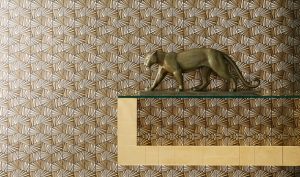
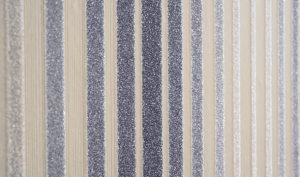
http://amynicholasinteriors.co.uk/2013/07/great-gatsby-inspired-art-deco-interiors/
How to Decorate in the Art Deco Style
If you want to incorporate some elements of Art Deco design into your home, you’re in luck. It’s very easy to add one or two pieces or to decorate a whole home in the distinctive style. Here are some guidelines to help you through the process.
Colors
Colors in Art Deco are striking and bold with a lot of contrasts. Bright and deep yellows, reds, greens, blues, and pinks mix well with silver, black, and chrome.
If you want something softer try creams and beiges which were also often used in living rooms, dining rooms, and bedrooms. These colors contrast beautifully with the polished wood and lacquered furniture common to the period.
Furniture
Choose strong, streamlined shapes with no frills. Furniture made of exotic woods like zebrawood, as well as chrome and mirrored pieces, are great options.
Art Deco furniture tends to be large in scale so don’t be afraid to buy big pieces. Sideboards, armoires and generously sized chairs are all typical of the period.
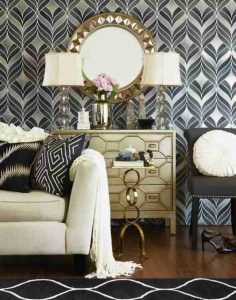
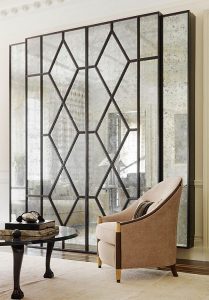
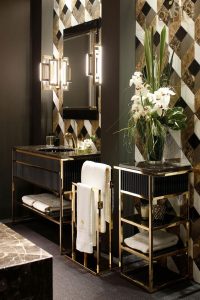
https://www.thespruce.com/decorating-in-art-deco-style-1976535 http://homesweethomes.stream/10-glamorous-art-deco-interiors-you-have-to-see/ http://www.homedesignideas.eu/best-golden-aesthetics-bathroom-design/
Fabrics
Don’t use any pretty florals or plaids in an art deco room. The fabrics in this style are usually either solid colors or geometric designs.
For an added punch try adding highlights with cushions in solid contrasting blocks of color. A key word to remember is “bold.”
Floors
Linoleum in abstract designs or black and white tiles are typical, as are lacquered floors. Polished parquet is also perfect for flooring.
Keep in mind that floors in the Art Deco period would have been overlaid with large rugs in geometric patterns, so feel free to do that if you choose.
Lighting
Lights were often made of glass and chrome (which was a brand new material at the time). Glass was sometimes etched or enameled. White glass and colored Tiffany-style glass were also very common.
It’s still possible to find fixtures that are original to the period, but if you can’t don’t worry. There are a lot of reproductions for sale on the market.
By incorporating these and other Art Deco elements into your décor, you can achieve the streamlined and modernist look of the Art Deco period.
References:
[1] https://www.grahambrown.com/row/blog-inspire-theartdecocollection.html
[2] https://www.grahambrown.com/row/blog-inspire-theartdecocollection.html
[3] http://amynicholasinteriors.co.uk/2013/07/great-gatsby-inspired-art-deco-interiors/
[4] https://www.thespruce.com/decorating-in-art-deco-style-1976535
[5] https://www.pinterest.com/pin/354728908131039867/
[6] http://www.homedesignideas.eu/best-golden-aesthetics-bathroom-design/

